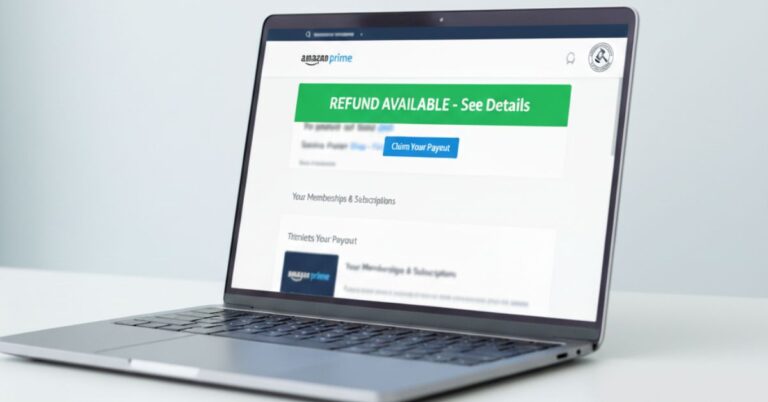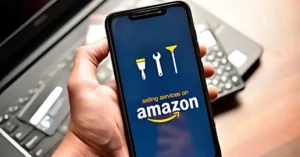
Amazon to refund millions to roughly 35 million Prime members after the FTC ruled the company used deceptive sign-ups and made cancellations difficult.
Amazon Prime is a dominant force in American e-commerce, with nearly 75 percent of all U.S. shoppers subscribed to the service in 2024. For many of its 180 million members, its benefits are a daily convenience.
However, the FTC has ruled that the methods Amazon used to grow this massive subscriber base were illegal. A landmark settlement now requires Amazon to pay back $1.5 billion in fees to customers who were tricked by its enrollment and cancellation processes, and you might be eligible for a refund.
Amazon to Refund Millions After FTC Ruling
Bob Niedt & Kathryn Pomroy, Kiplinger"With Amazon Prime costing you $139 a year for the annual subscription, it's no surprise that consumers are wondering whether Amazon Prime is worth the price."
According to the Federal Trade Commission, Amazon has agreed to a historic $2.5 billion settlement over allegations that it misled consumers into Prime memberships. The agency said Amazon designed deceptive enrollment flows and made cancellations intentionally difficult.
The settlement includes a $1 billion civil penalty and $1.5 billion in consumer refunds. This makes it one of the largest financial judgments ever obtained under the Restore Online Shoppers’ Confidence Act.
Amazon to refund millions means that an estimated 35 million customers who were affected by unwanted enrollments or failed cancellation attempts will receive compensation. Refunds are capped at $51 per customer, representing up to six years of disputed Prime fees.
The FTC also requires Amazon to change its enrollment and cancellation practices. The company must add clear disclosures on cost, auto-renewal, and cancellation terms during sign-up.
Amazon to refund millions is only part of the order. The company must also create a simple cancellation process that matches the way customers signed up, eliminating time-consuming or costly steps.
Additional requirements include:
- A clear decline button for those not interested in Prime, replacing misleading options such as “No, I don’t want Free Shipping.”
- Transparent information on membership fees, renewal dates, and charges.
- Independent third-party oversight to monitor compliance with consumer redress and process updates.
The Commission unanimously approved the final order in a 3-0 vote, which was filed in the U.S. District Court for the Western District of Washington. Once signed by a judge, the stipulated order carries the force of law.
Not a Clear Win? Ex-FTC Officials Criticize Amazon Settlement
According to a Time Magazine article by Miranda Jeyaretnam, while the FTC secured a $2.5 billion settlement, the decision has drawn criticism from former officials. These critics suggest the deal allows Amazon to avoid full accountability for its deceptive practices.
The timing of the settlement has raised questions, as it came just days after a federal judge ruled in the FTC’s favor on a key issue. The trial was already underway, with the agency seemingly in a strong position to win a more decisive victory against the company.
Former FTC leaders argued that the fine is a small fraction of Amazon’s market value and the deal rescues the company from a likely guilty verdict. Concerns were also raised that while the agreement will force Amazon to refund millions, the executives named in the suit face no personal fines or penalties and admit no wrongdoing.
This settlement occurs amidst a broader political shift at the FTC, which now operates with a Republican majority. The agency’s focus has reportedly moved toward different priorities under its new leadership.
For its part, Amazon maintains that its executives have always followed the law and that the settlement simply allows the company to move forward. A spokesperson also noted that many of the required changes to the Prime sign-up and cancellation process have already been implemented.
Despite the controversy, the outcome requires Amazon to refund millions of affected customers up to $51 each. Eligibility for the payout between June 2019 and June 2025 includes:
- Customers who signed up for Prime through a challenged checkout or enrollment page.
- Users who started the cancellation process but did not complete it.
- Subscribers who accepted a “Save Offer” while attempting to cancel their membership.
Are You Eligible for a Refund? Here’s What to Know
From a CNN report by Auzinea Bacon, the FTC estimates that around 35 million customers were impacted by Amazon’s deceptive practices. Anyone in the United States who signed up for Prime or unsuccessfully tried to cancel their subscription between June 23, 2019, and June 23, 2025, may be eligible.
The settlement specifies several groups of customers who qualify for a payment. You may be eligible if you:
- Signed up for Prime through a challenged enrollment page, such as the main checkout, shipping selection, or Prime Video app.
- Attempted to cancel your Prime membership but did not complete the multi-step process.
- Used three or fewer Prime benefits within a year of enrolling through one of the challenged methods.
The order requires Amazon to refund millions of users, with individual payments of up to $51. However, if the total number of claims exceeds the available funds, payments may be issued on a pro rata basis, meaning some customers could receive less.
Payments will be distributed in phases, starting with automatic refunds sent within 90 days to certain eligible members who used few benefits. After that, claims will be processed for customers who were unintentionally enrolled, followed by those who were unable to cancel their subscription.
An official settlement website with a claims form has not yet been made public but will be linked on Amazon’s site and app. Customers eligible to file a claim will be notified directly by email and mail within 30 days after the automatic payment phase is complete.
This process ensures that as Amazon to refund millions, eligible users have a clear window to act. After receiving the official claims form, customers will have up to 180 days to submit it to receive their payment.
Prime Sharing Perks Come to an End as Amazon Family Takes Over
In a related news on USA Today by Saleen Martin, Amazon’s long-standing Prime Invitee Program officially ends on Oct. 1. The program, which launched in 2009, allowed members to share free shipping benefits with anyone, regardless of address.
The shift means Amazon to refund millions from deceptive Prime sign-ups is not the only major change facing customers. The company is also limiting how Prime benefits can be shared, pushing users toward Amazon Family, which only allows benefit sharing with people in the same household.
What changes for members?
- Invitees in the Prime Invitee Program will lose access to Prime delivery starting Oct. 1.
- Amazon Family replaces the program, offering delivery perks and additional benefits but only for household members at the same address.
- Benefits include:
- Fast, free delivery
- Exclusive shopping events like Prime Day
- Prime Video content
- Amazon Music and other digital perks
- Free Grubhub+ membership
- Fuel savings at over 7,500 participating stations
What options do impacted customers have?
- Amazon is offering affected users a limited-time deal: 12 months of Prime for $14.99, available through Dec. 31.
- Those who lose access to delivery perks can join Amazon Family through a household Prime member or purchase their own membership.
- To share benefits via Amazon Family, members must:
- Live at the same residential address
- Link accounts and share payment methods
- Have a valid U.S. billing address for Prime Video sharing
Customers can manage household sharing by navigating to “Share your Prime Benefits” in their Prime membership settings. While members can leave Amazon Family at any time, they must wait 12 months before joining another household.
The Value of Amazon Prime Membership
From CNBC by Brett Holzhauer, Amazon Prime has become a staple in American households, with an estimated 76.6 million accounts in the U.S. The popular service costs standard members $139 per year, with discounted rates for students and those on government assistance programs.
While the annual fee is notable, one JPMorgan analyst estimated the true value of a Prime membership to be around $1,000 if each service was purchased separately. With that high perceived value, the news that Amazon to refund millions of users over enrollment tactics is significant for household budgets.
The service’s value comes from a wide array of perks that go far beyond its famous two-day shipping. Key benefits for members include:
- Digital Media – Access to streaming platforms like Prime Video, Amazon Music, and Prime Gaming.
- Shopping Perks – Exclusive member deals at Whole Foods and early access to Lightning Deals, which sellers often manage with an Amazon agency.
- Food & Grocery – Free one-year Grubhub+ membership for free food delivery and two-hour grocery delivery.
- Reading – A rotating library of free digital books and audiobooks through Prime Reading.
In the subscription market, Prime’s main competitor is Walmart+, which costs about $40 less per year. While Walmart+ offers similar shipping and grocery benefits, it lacks the extensive digital media and shopping perks that Amazon provides.
This vast ecosystem of benefits is what makes the service so popular and integrated into daily life for so many. It is also why the mandate for Amazon to refund millions over deceptive sign-up practices is such a major development for consumers.
Tommy Tindall, Nerdwallet"You can try Amazon Prime for free for 30 days to determine if it’s worth the cost. But heads up: Amazon keeps your credit card information on file when you sign up, so make sure to cancel your membership before the trial period expires if you don’t want to be charged."






